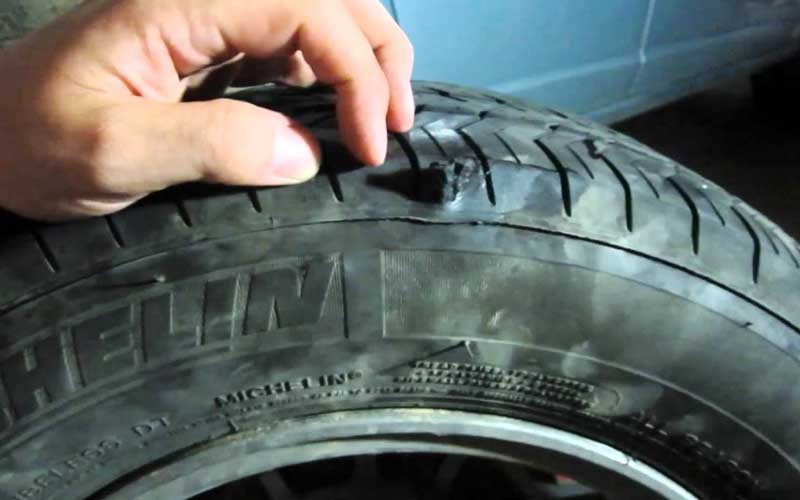When you have a screw in your tire, it can be a real pain to get it fixed. You may not know what to do, or where to go.
In this blog post, we’ll discuss what you should do if you have a screw in your tire. We will also provide information on where you can go to get your tire fixed.
When you have a screw in your tire, the first thing you should do is pull out the screw with a pair of pliers. Then, use a tire repair kit to thread a piece of tire string into the hole, and get it sealed.
To repair your tire, you will need a tire replacement kit found in the back of your car, as well as a puncture repair kit. The following table shows you all the tools you’ll need for the job.
Once you have all of the necessary tools and supplies, you can begin repairing your tire. Here are the steps:
It is not safe to drive with a screw in your tire. The screw can cause the tire to leak air. This can lead to a blowout, which can be very dangerous. If you must drive with a screw in your tire, make sure to keep an eye on the pressure and stop as soon as possible to have the tire repaired.
A screw can damage a tire in several ways. First, the screw can cause the tire to leak air. This can lead to a blowout, which can be very dangerous.
Second, the screw can become lodged in the tread of the tire. This can cause uneven wear and may eventually lead to a blowout.
Third, the screw can damage the sidewall of the tire. This can cause the tire to leak air or may eventually lead to a blowout. All of these scenarios are dangerous and should be avoided.
In case the tire is damaged beyond repair, you will need to replace it. If the damage is minor, you can have the tire repaired. A qualified mechanic will be able to tell you if your tire needs to be replaced or repaired.
But if the screw is on the side of the tire, it can be repaired using a patch, and if the screw is in the tread, it will need to be plugged.
Tire sealants are a quick and easy way to fix a punctured tire. They work by sealing the hole in the tire. This prevents air from escaping and keeps the tire inflated. You can purchase tire sealants at most auto parts stores.
They work by sealing the hole in the tire. This prevents air from escaping and keeps the tire inflated. You can purchase tire sealants at most auto parts stores.
To use a tire sealant, simply follow the instructions on the bottle. Most tire sealants will require you to remove the valve stem from the tire. Once the sealant is in the tire, replace the valve stem and inflate the tire. The tire sealant will work its way into the hole and seal it.
It is important to note that tire sealants are a temporary fix. They are not meant to be used as a permanent solution. You should take your car to a qualified mechanic as soon as possible to have the tire repaired or replaced.
Most punctures can be repaired, but there are some that cannot. If the puncture is in the sidewall of the tire, it cannot be repaired. If the puncture is in the tread and is less than ¼ inch, it can be repaired. Any puncture larger than ¼ inch will require a new tire.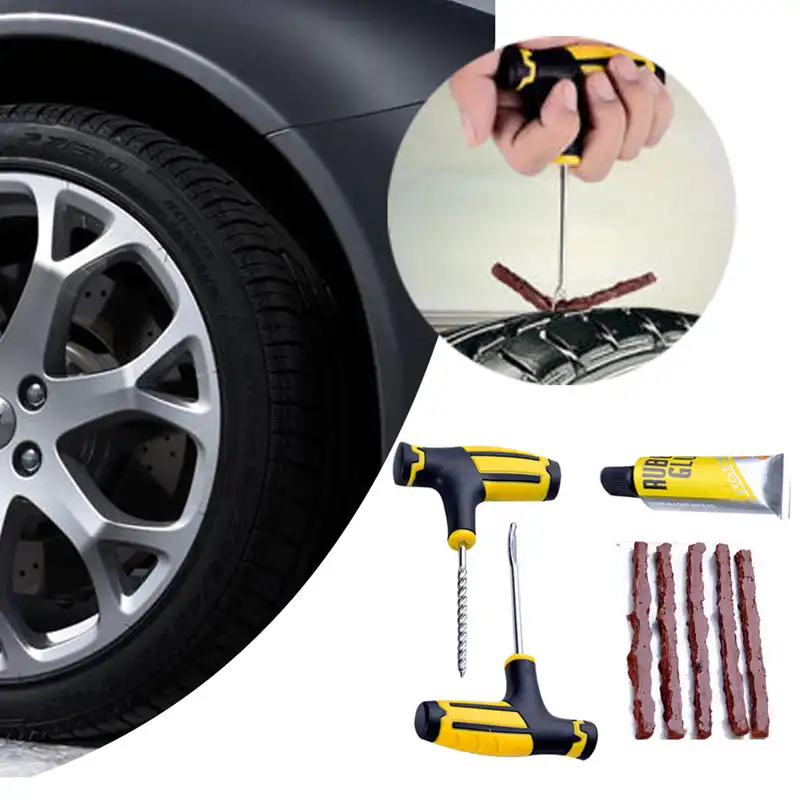
Punctures in the sidewall of the tire cannot be repaired while those in the tread of the tire that is less than ¼ inch can be repaired.
It only takes a screw that is ¼ inch long to puncture a tire. This is why it is so important to be diligent about checking your tires for any objects that may be lodged in them.
In case you have a choice, always opt for patching the tire over plugging it. Patching the tire will create a stronger seal and is less likely to cause further damage.
However, not all punctures can be patched so if the puncture is in the sidewall of the tire, you will need to choose another option.
Yes, plugs are safe for tires. They have been used to repair punctured tires for many years. However, they are not meant to be a permanent fix. You should take your car to a qualified mechanic as soon as possible after plugging your tire.
Yes, a plugged tire can blowout. This is why it is so important to keep an eye on the pressure of your tires after you have had one repaired. If you notice the pressure starting to drop, pull over and call for help.
The cost to repair a tire with a screw in it will depend on the extent of the damage. If the puncture is in the sidewall, the tire will need to be replaced. If the puncture is in the tread and is less than ¼ inch, it can be repaired.
The cost of repairing a tire will vary depending on the type of tire and the location of the puncture. You can expect to pay between $30 and $60 to have a tire repaired.
As you can see, there are two different ways that you can fix a screw in your tire. You can either remove the screw and take the tire to a qualified mechanic, or you can plug the tire.
Both of these methods are effective and will allow you to continue on your way.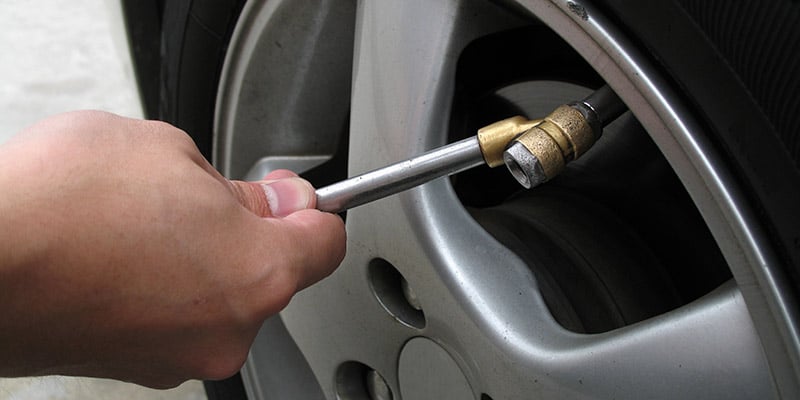 If you have any questions or concerns, feel free to contact a qualified mechanic. They will be able to help you choose the best option for your situation.
If you have any questions or concerns, feel free to contact a qualified mechanic. They will be able to help you choose the best option for your situation.
Here are some more articles for you to check out:
What Causes A Bubble In A Tire?
Why Do Tires Blow Out?
What Does the T or H Mean on Tires?
Screw-in tire is one situation you may encounter when driving. It is a cause of panic to many as it means you are at the risk of a flat tire if not deflated already. How do you deal with a screw-on your car wheels? This is a question you may have if you find yourself in this puzzle.
Before looking at the solutions, a thing to know is that a screw puncture differs from a nail puncture. In the case of puncturing by nail, you can easily pull it away as it is regular. The screw, on the other hand, is irregular and needs you to been on its removal due to its toothed structure. In this article, we will guide you on how to pull screws in tire repair.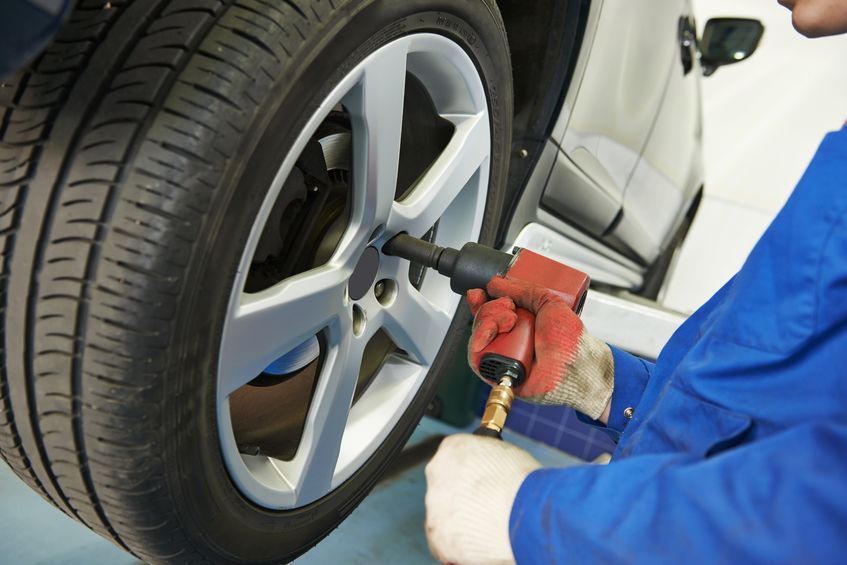
The screw can get in your tire in various ways, though many think it is an act of sabotage. While it may be a probable cause, you should also factor in the environment your drive in to get to the root of the problem.
Here are some of the ways that a screw can make its way into your tire.
The most common way of getting screws in your tire is by driving over them. A thing that you will realize with the screw-on tire issue is that it mostly affects the rear wheels. In this situation, a screw will mostly lie vertically on the ground. When the front wheels pass over the screw, they flip them over by the head, leaving them erect, and the rear wheels go over them. Smaller screws are easy to get into tires due to their center of gravity, which allows them to stand vertically on the road. With small screws in the tire, the situation is not as dire as they do not cause much damage. The thickness of the tread may prevent the small screws from causing much damage.
You may also drive over screws in puddles on the road. It is hard to determine if there are any obstacles as they are beneath the water in such a scenario. The water disturbance in the puddle may cause the screws to raise or point at an angle where they can easily penetrate the tire.
Screws in wooden planks are also a risk to your tires. The plank gives them the stability to stay upright. When you drive over the planks, the screws penetrate your wheels, and the wood may easily disintegrate due to the vehicle’s weight. With the screw exposed, it may dig further into your tires.
Sometimes you may find screws in your tires, and the first thing that clicks is someone sabotaging you. At times, it may be the case, and the person responsible may either drive the screw in or place it in a vantage place where you will drive over it. If you suspect you are at the risk of sabotage, you should always look under around the tires before driving off.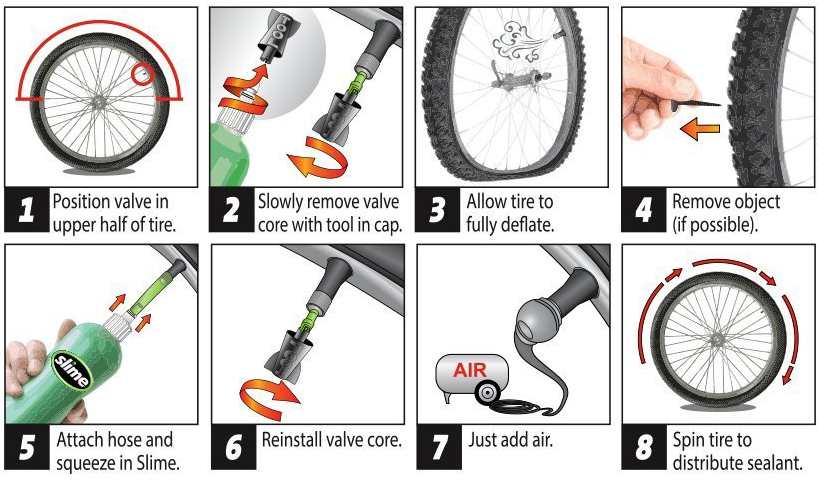 You can also perform a sweeping act with your feet around the wheels to ensure you are not at risk.
You can also perform a sweeping act with your feet around the wheels to ensure you are not at risk.
What happens if you have a screw in a tire? A deflated tire is the number one expectation. The screw may act as a plug and hold the pressure enough for some distance. However, you may notice that there is a hitch with the wheels. The symptoms may come in the form of a rough driving experience or car imbalance due to low pressure on the wheels.
When you spot a screw in your tire, you need to rectify the issue immediately before it goes overboard. Can I drive with a screw-in tire? Yes, you can drive with the screw on your wheel, but you should not make such a move unless you are desperate or going to repair the damage on your next stop. A spare tire comes in handy on such occasions as it will give you room for the needed attention.
Driving with a screw-on your tire is very risky as you may cause extensive damage to it.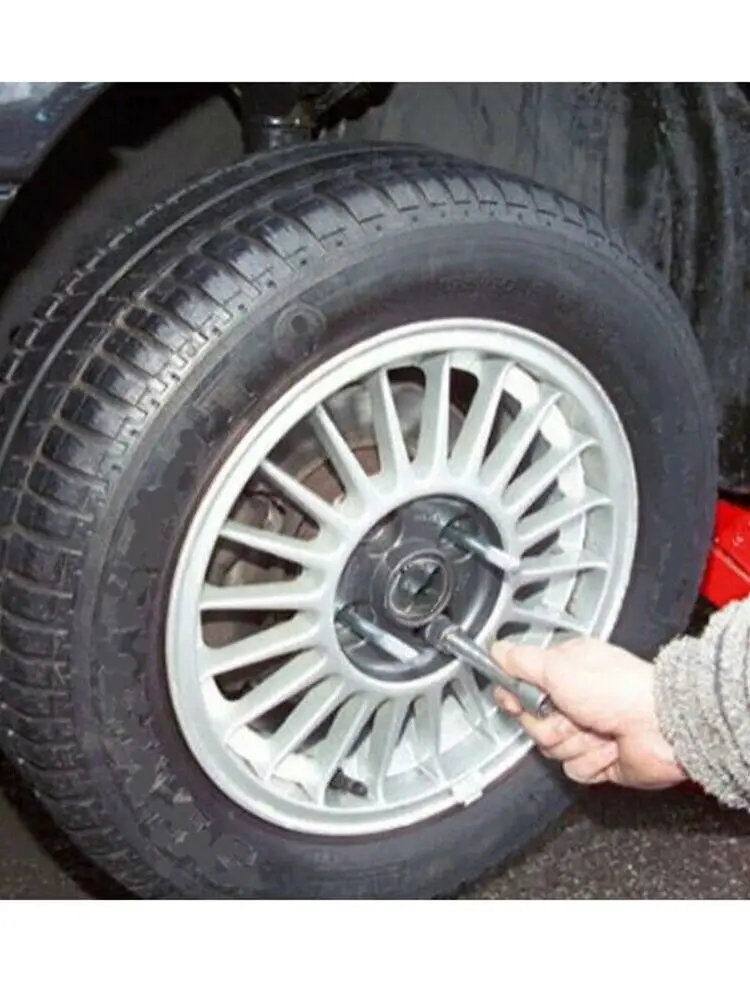 If the screw penetrates deeper into the tire, you may notice that the driving experience being quite rough, especially when on bumpy roads.
If the screw penetrates deeper into the tire, you may notice that the driving experience being quite rough, especially when on bumpy roads.
If it is a small screw, you can easily pull it out. Check your tools box to see if you have the right tools to pull out the screw. A pair of pliers can do the trick. However, you should understand that pulling out the screw is a gamble as you cannot be 100% sure of its length. The best move to pull is to go to a mechanic who will remove the screw and patch up the hole.
Another essential thing to keep in mind is the location of the damage. If you have the screw in the middle of the tire along with the treads, a tire patch can solve it. However, if the screw is on the sides or shoulder of the tire, replacement is the only viable option.
Why can’t you patch a tire shoulder? If you have a screw on the tire shoulder, patching is not an option as it may blow due to the car’s weight. The weight leads the tires to bulge outwards and force out the plug. If you are driving, it can be catastrophic.
If you are driving, it can be catastrophic.
In short, a screw-in tire between treads is repairable, but if on the sides, you replace the tire.
Ans: Yes, you can repair a tire with a screw in it, depending on the location of the damage. If the damage is on the tread, you can patch it up. However, if it is on the side, you will notice that your preferred tire shop won’t repair tire. The problem is hazardous, and the solution you have is to get a new tire.
Ans: Averagely, fixing a tire with a screw in it will cost you between $10 and $20. The price depends on the garage, as some may be high.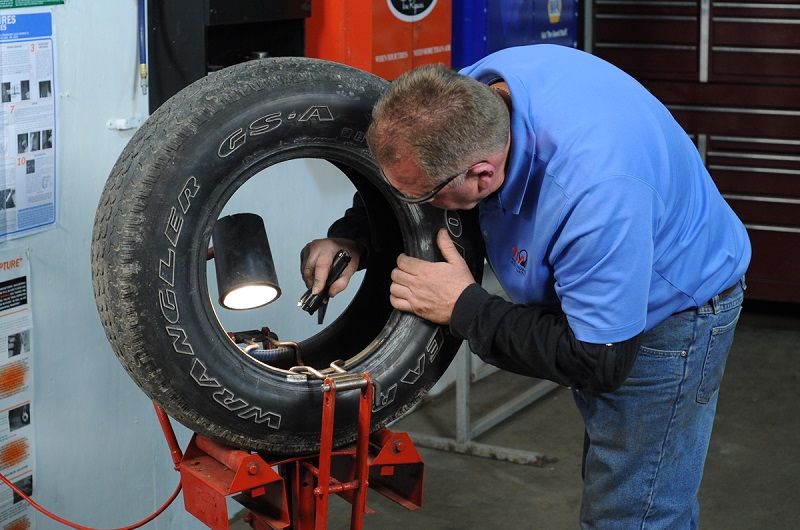 The cost may be higher if you want additional services like wheel alignment.
The cost may be higher if you want additional services like wheel alignment.
Ans: The distance you can move with a screw in your tire depends on how deep-set it is in the tire. If it is a long nail, you may drive for around 10-miles to notice that you have a looming issue. When you discover the problem, sort it out immediately for the best experience on the road. A small screw does not pose much risk, with some falling off. However, if you notice it, you should remove it immediately to be on the safe side.
Ans: If you find a screw in your tire, you have to contact a professional to remove it. You can drive to a garage for inspection to check on the extent of the damage and have the necessary repairs. Never pull the screw from the tire if you do not know what you have in your hands. You may pull it off in the wrong way and cause more damage to the tire.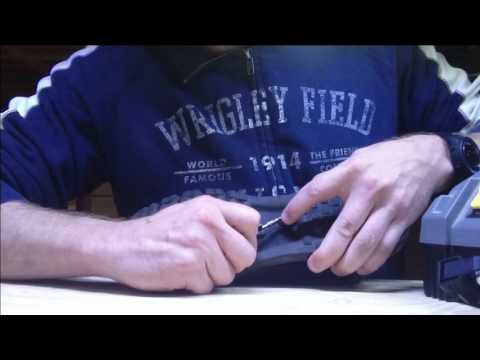
Ans: A screw-in tire is very dangerous as it can cause secondary issues like rough driving, deflated tires, and tire imbalance. If the screw is on the tire shoulder, it means the tire is no longer worthy of the road, and you need a replacement.
Ans: If you notice a screw in your tire, you should not pull it out, mainly if it is on the sides. If you see it, go to a mechanic and let them deal with the situation professionally. If you have the right skills and a puncture repair kit, you can try to sort the issue.
Ans: You may need a new tire if the nail penetrates the tire shoulder. If the issue is on the treads, it is relatively manageable as you can easily patch it up. In other instances, if the nail has been in the tire for a long time, you may also need a replacement, especially if there is extensive damage.
Are you dealing with screw-on tires? If the answer is affirmative, then this article is an ultimate asset that will give you an in-depth understanding of this issue. If you have this issue, do some inspection to know where the problem lies. As a summary, you can make repairs if the screw is on the tread area, but you will need a replacement if on the sidewall. A solution on how to plug a tire sidewall is temporary, requiring you to replace the tire for a fulfilling driving experience.
Read More:
Another season of changing shoes is approaching. And you may remember that on one of the tires after the last winter/summer there is a jamb - a small bump. I don’t want to run to the store for the sake of one new tire.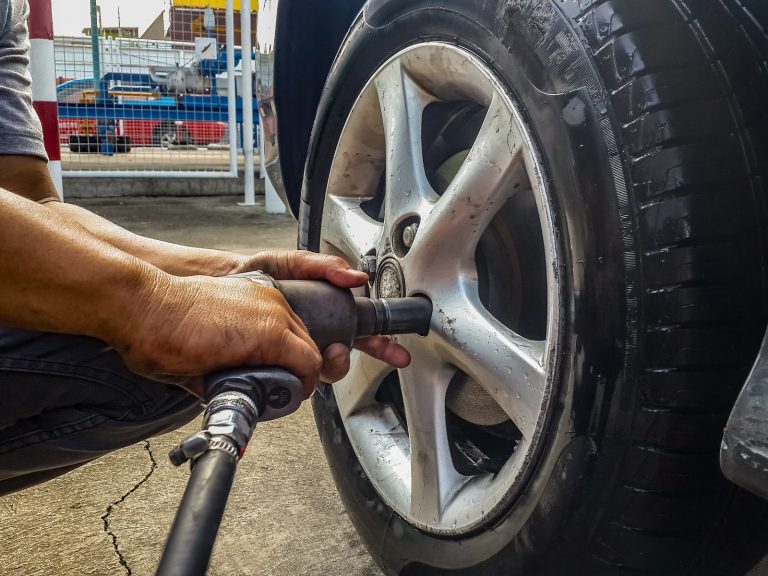 We understand. Or maybe it looks even better if repaired?
We understand. Or maybe it looks even better if repaired?
Yes, not every wheel that has met with a nail, rebar sticking out of the ground or a sharp stone on the road is considered damaged. Everything, of course, depends on the scale of the damage and its location on the tire itself. Some are easily repaired, while others are simply impossible to do - the tire can only be sent to the trash.
A bulge on a wheel, referred to by drivers as a bump or bulge, is the most common tire sidewall defect. It appears due to a collision with an obstacle or after falling into a pit, more often at high speed. The threads of the sidewall carcass are easily damaged by impact, and the tire at this point can no longer hold the load and air pressure - swelling appears. A small bump sooner or later turns into a big one, and driving with such a defect is dangerous - the wheel can shoot at any moment. At high speed, this is fraught with loss of control, departure from the road and a rollover.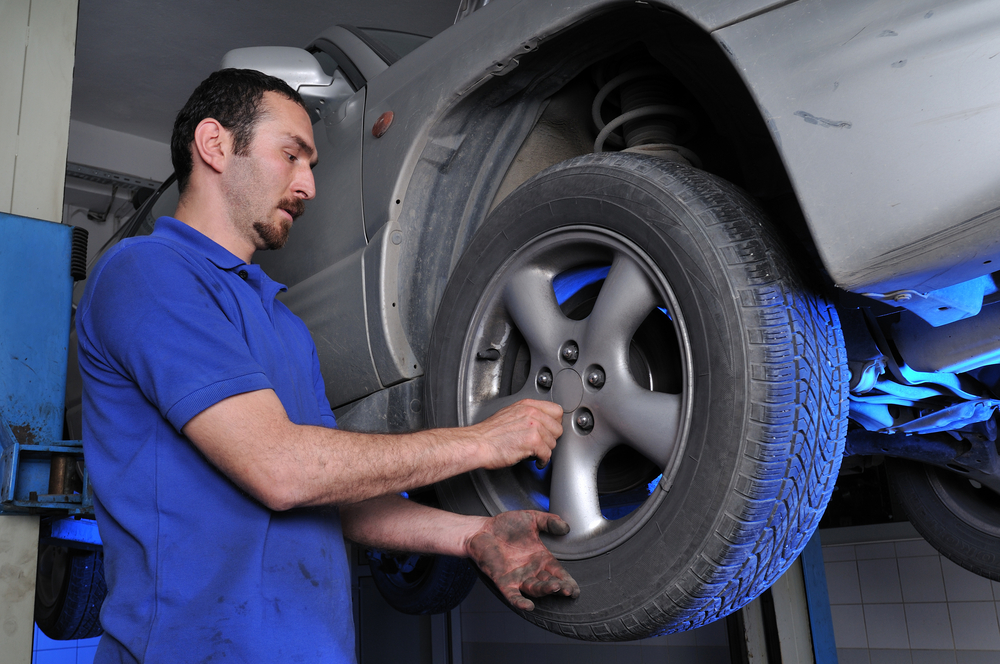
The quality of roads in Kazakhstan contributes to the appearance of bulges on tires
Some types of bulges are repairable, although this is a temporary measure. Not a single patch can restore the factory rigidity. Ideally, change the tire.
Special cord patches can extend the life of a tire with a herniation, even if the swelling has appeared on the tread. The sidewall is a different story. If the swelling appeared at a distance of more than 40 mm from the side, it can be repaired. If not, then the wheel needs to be replaced. Blisters on low profile tires are most often non-repairable.
For maximum safety when riding with a repaired bump, insert the tube. This is an inexpensive and reliable solution. On our market, you can find cameras made in China and Russia, the latter are slightly more expensive, but also of better quality.
The elimination of a side cut is a serious operation, therefore, as in the case of a bump, you will have to go to the professionals. We need cord patches, fortunately in our time they are of different sizes and with a different number of layers. And if you do it wisely, then you can't do without special tools and vulcanization.
We need cord patches, fortunately in our time they are of different sizes and with a different number of layers. And if you do it wisely, then you can't do without special tools and vulcanization.
A cut, by the way, cannot be healed in all cases. If the gap is in the shoulder area of the tire, it is unlikely that anyone will undertake to repair it, since no guarantees can be given here. However, our Kulibins take on even the most difficult cases, cutting out parts of the sidewalls from the tires and even weaving the cord on their own.
Tire overhaul. We would not put such a wheel on ourselves
Low profile tires can be repaired, but more difficult. A tear in the sidewall is easier to seal on tires with a medium or high profile.
Sometimes a cut is confused with a pluck. This is when the outer layer of the sidewall caught on something sharp, a tear formed, but the frame itself remained intact. There is nothing wrong with that, although the drivers at the tire fitting company successfully repair the cut, for which they take it accordingly.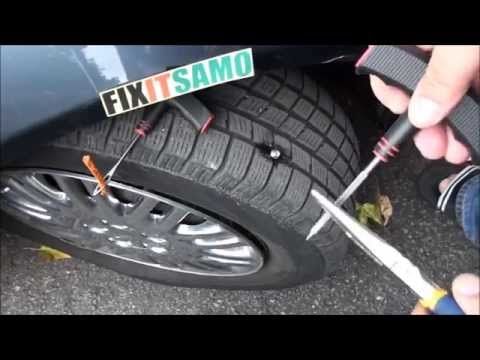
If a piece of rubber remains on the sidewall, then glue it with ordinary superglue (101st). If it came off, then it is better to cover it with raw rubber and vulcanize. Leaving the pluck bare is not recommended, because the tire carcass, often consisting of a metal cord, will quickly corrode.
In Europe, defective or used tires are perforated before being sent for scrap to prevent their resale and possible operation. But they don’t know that we have such holes on the sidewall patched once or twice
Cuts and hernias are not the only possible damage to the side of the tire. You can also spoil the side ring, in the process of changing shoes, for example. If it’s for garlic, then such a tire is already dangerous. Sooner or later, the tire pressure and the load in motion will start to squeeze the rubber off the rim - a wheel explosion can occur.
This ailment is repaired if the wire ring - the base - is intact. There are no special technologies and materials to correct this particular problem, but most often craftsmen use a two-component composition for chemical (also called cold) vulcanization. After mixing, the mass is pressed into a fat-free damage. Compound manufacturers recommend waiting 72 hours before mounting a tire. Of course, our masters do not pay attention to this condition - they put the tire right away. And it’s good if the wheel is flat because of this at night in the parking lot, and not on the road.
There are no special technologies and materials to correct this particular problem, but most often craftsmen use a two-component composition for chemical (also called cold) vulcanization. After mixing, the mass is pressed into a fat-free damage. Compound manufacturers recommend waiting 72 hours before mounting a tire. Of course, our masters do not pay attention to this condition - they put the tire right away. And it’s good if the wheel is flat because of this at night in the parking lot, and not on the road.
If the side ring tears are barely noticeable, but the wheel still deflates, then you can use a special liquid - a bead seal designed to seal a tubeless tire.
These seals have been used in motorsport for some time. In particular, in the American Formula D Drift Series, drivers used compounds to keep the tire on the rim even with minimal tire pressure. Now they are banned.
Pay attention to the left rear wheel of the Nissan Silvia S13. Due to too low pressure, it was literally taken off the disk under load
Every schoolchild has faced this problem when patching the inner tube of his bike after hitting something sharp.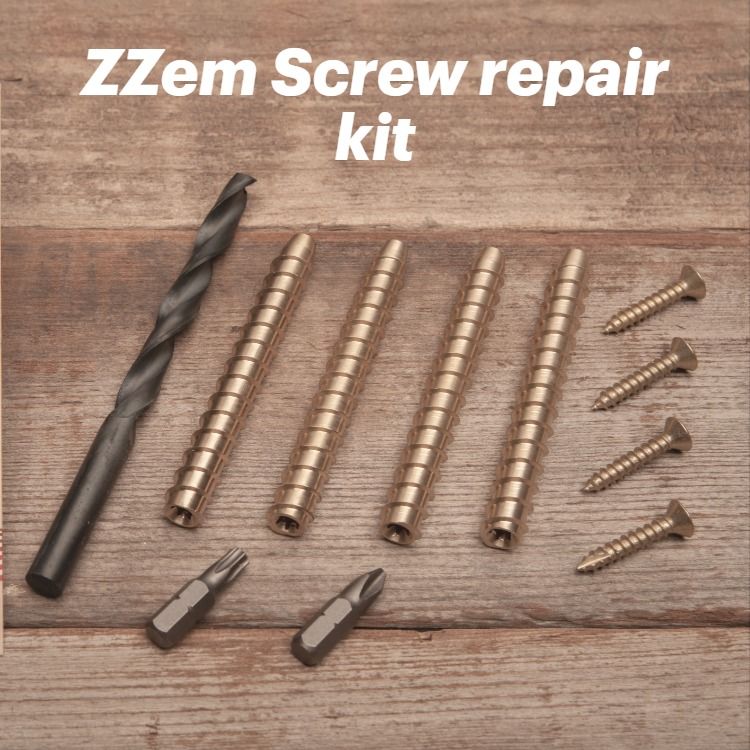 Repairing a car tire puncture with your own hands will also not be difficult even on the road. But for this you will need a pump (or compressor) and a universal tire repair kit with harnesses. All this is sold at any car market or gas station.
Repairing a car tire puncture with your own hands will also not be difficult even on the road. But for this you will need a pump (or compressor) and a universal tire repair kit with harnesses. All this is sold at any car market or gas station.
Repairing a tire on the side of the road with harnesses
The process is simple. If we are talking about the front wheels, then in most cases the wheel can not even be removed, it is enough to turn the steering wheel in the right direction, find the puncture site and carry out repairs. First, the hole is cleaned with a helical awl from the set. The tourniquet itself is smeared with glue and tucked into the eye of the awl, after which it is inserted into the tire hole. With a sharp movement, the tool is removed, and the tourniquet remains in place and clogs the hole. The tails are cut with a knife, but not at the root, it is recommended to leave about 20 mm. The tire is inflated and checked.
Sometimes a nail or self-tapping screw clogs the hole by itself, remaining in it.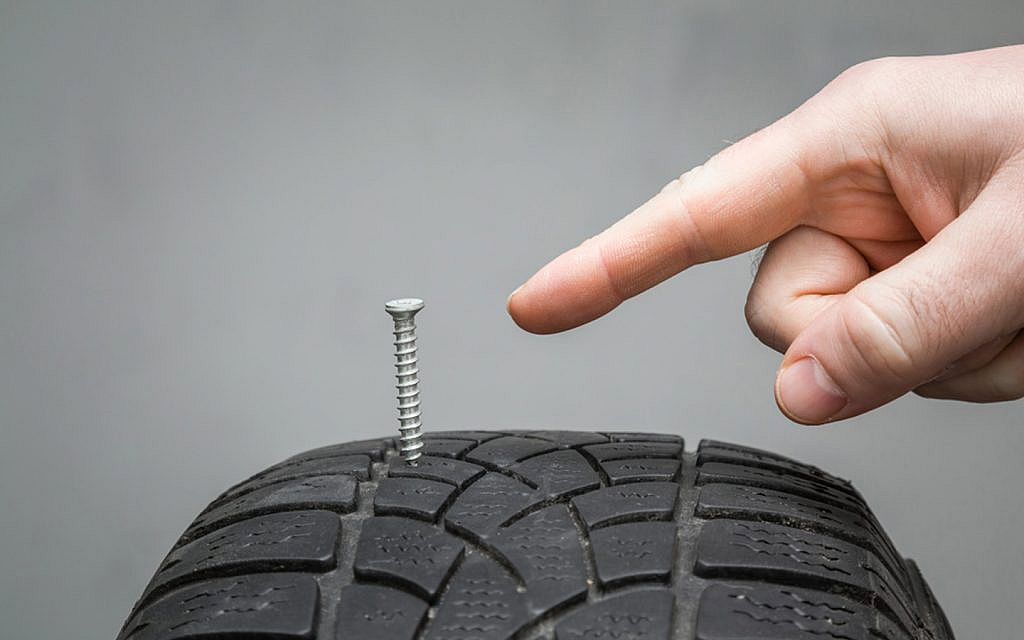 If you see a hat in a tread, do not rush to pull it out. While the pressure is holding, move to vulcanize. And sometimes they drive with a screw in a tire for weeks.
If you see a hat in a tread, do not rush to pull it out. While the pressure is holding, move to vulcanize. And sometimes they drive with a screw in a tire for weeks.
Repair of a puncture at a tire shop
Punctures are also repaired with harnesses at a specialized service, although among professionals such repairs are not considered long-term. After a few months, the flagella dry out and can let air through. There are more advanced methods like cold and hot vulcanization. The latter is more reliable. In this case, the hole is sealed with an elastic patch, and the funnel from a foreign object is filled with a special compound. After that, a vulcanizer is put on the tire, it heats up the rubber and solders it.
In addition to the plaster, the puncture is also repaired with special cord fungi. Craftsmen process the puncture site: drill it and treat the surface with a tool to roughen it. Then the repair area is lubricated with glue (it is also called cement) and a fungus is introduced.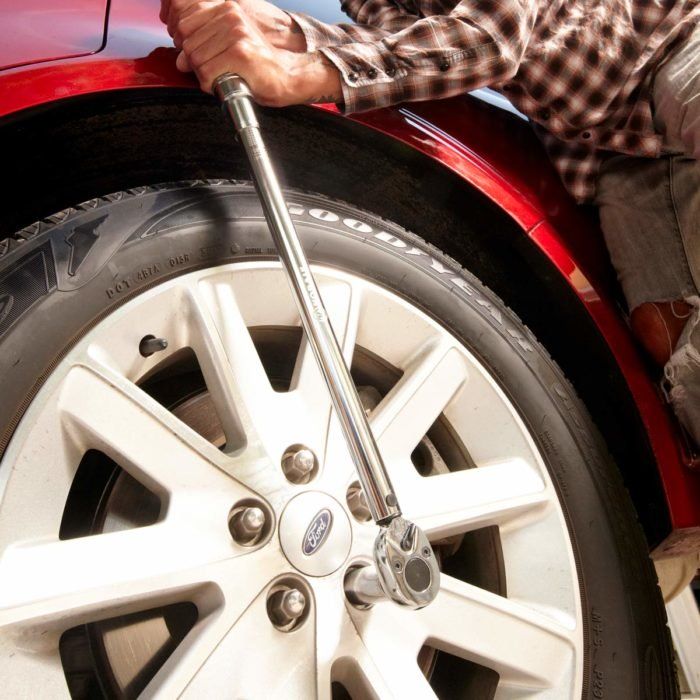 This is done from the inside of the tire. The cap of the fungus is rolled, and the excess legs are simply cut off from the outside.
This is done from the inside of the tire. The cap of the fungus is rolled, and the excess legs are simply cut off from the outside.
Puncture repair with sealant
With the advent of tubeless wheels, and later run flat tires, many automakers began to abandon spare wheels. Instead, repair kits with compressors are supplied with the machines. A repair kit is essentially a bottle of pressurized sealant. Later, such spray cans began to appear on the shelves of ordinary car dealerships.
This method has not taken root in the CIS, because the condition of the roads makes it necessary to have at least a stowaway in the kit, but it can also be considered as a method of repair on the road.
The car must be jacked up and sealant must be pumped into the damaged wheel through the nipple. Next, you should spin the wheel, then pump it up, lower the car and drive a few hundred meters. If the tire tightness has not been restored, repeat the procedure.
If the tire tightness has not been restored, repeat the procedure.
For commercial vehicles, cutting the tread with a special device (regrower) is a common thing. Moreover, such tire retreading is provided by the factory (marked REGROOVABLE on the sidewall) to increase the service life. But there are entrepreneurs who undertake to deepen the grooves in tires for passenger cars. But they are not intended for such an operation. Often used tires for sale are “refreshed” in this way. Be careful!
What is the threat?
The worst option is that the retreaded tire will shoot out on the road, as the master can damage the undertread layer when deepening the grooves. Such a tire will not be able to hold pressure at some point. There will be a boom! At best, the tire will indeed last a little longer, but is the game worth the candle? We think it's not worth it.
How is cutting made?
A regrower is used to cut the tread. Roughly speaking, this is a large soldering iron with interchangeable tips of various shapes. It goes through rubber like a knife through butter.
Roughly speaking, this is a large soldering iron with interchangeable tips of various shapes. It goes through rubber like a knife through butter.
If the tire is for passenger cars, then it is worth taking on a regrower only in one case - when part of the tread pattern was welded with "new" rubber during repair. This is where threading comes in handy in order to restore the grooves and symmetry of the tread.
Vehicle operation is prohibited if:
- tires have a residual tread height of less than 1.6 mm;
- tires have punctures, cuts, ruptures that expose the cord, as well as delamination of the carcass, delamination of the tread and sidewall;
- tires in size or load capacity do not match the car model;
- tires of various sizes, designs (radial, diagonal, chamber, tubeless), models, with different tread patterns, winter and summer, studded and non-studded, new and restored, are installed on one axle of the car;
- Tires retreaded according to the second repair class are installed on the front axle.
What is a second class repair?
This is the case when the carcass of the tire is restored after serious damage. A side cut (or tear) is a serious damage to the tire carcass.
Car repair ,
Each of the drivers may have such a situation when a tubeless tire deflated on the way, but the spare tire was not in the car, or this is already the second wheel for a long road. In this case, there are only two ways out - one way or another, wait for help from others (take the wheel to a tire fitting, call to bring a spare tire, call a tow truck, etc.), or you can repair a punctured tire yourself.
Before moving on to the topic itself, it is worthwhile to carefully study all aspects of the operation of tubeless tires, but their widespread use has clearly proved that they have a clear advantage over tube wheels.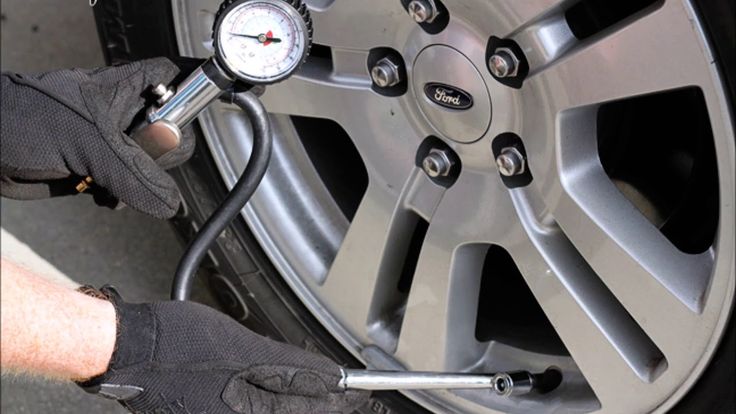
The main advantage for the driver is the ease of repair, because if a wheel with a chamber is punctured, it will have to be removed and disassembled in order to remove the chamber, and only then carry out the repair itself, and then you will have to do laborious work (if it is done without special equipment) in reverse order. Tubeless tires, in most cases, can be repaired without dismantling the wheel, and without even removing it from the car.
In addition, when punctured, a tubeless tire deflates for a long time, and sometimes drivers ride with several nails or self-tapping screws in the wheel without noticing the problem for up to several months. Therefore, if necessary, you can pump up a wheel with a puncture and have time to get to the nearest tire service.
However, there are several nuances that complicate operation. For example, with a strong impact on the edge of a pit or a curb, the tire can depressurize and instantly deflate, or if the wheel is not completely deflated, it can disassemble during a turn, which will lead to an instant descent.
Also, such a wheel is very difficult to inflate with a conventional pump or a mobile compressor, if it is disassembled (flew off the disk), in this case a professional compressor with high pressure is needed.
Usually, this procedure is not too difficult, and the puncture site is easily detected by visual inspection due to the culprit of the damage, which remains in the tread.
Alternatively, a soapy solution of any soapy liquid or plain water may help. By pouring on the tire with our “puncture indicator”, you can quickly find the required place by the emerging air bubbles.
But in the case when there is no soap or water, you have to carefully inspect the tire, while listening to hissing and trying to find the puncture site with your hand. This method helped me repeatedly in deaf and deserted places.
Using a tubeless tire repair sealant is the easiest and fastest way to repair a wheel and get to a professional tire shop. If you do not have such a can, then we advise you to buy it, sooner or later - it will save your nerves, time and mood.
If you do not have such a can, then we advise you to buy it, sooner or later - it will save your nerves, time and mood.
And so, if there is a nail or screw left in the tire, then it should not be removed immediately, first we connect the bottle with sealant to the nipple and if the bottle is new, then we completely inflate the wheel, if there is already insufficient pressure left in it, then before repair will need to pump up the wheel to at least 1 atmosphere.
After the sealant is pumped into the wheel, it is necessary to remove the foreign object, and the sealant under air pressure will seal the puncture site from the inside, but remember that this method of repair is temporary, and it will last for about 100 km, which is enough for a visit tire fitting.
It should also be remembered that the use of sealant disturbs the balance, and you cannot drive fast on such a wheel, the safest speed will be about 60 km / h.
This method is the most correct for emergency road repairs. Similar kits are sold in any automotive store, and even in any large supermarket. The kit usually includes a special awl to expand the puncture, a hook for the lace, the laces themselves with bituminous impregnation and, in some cases, glue.
Similar kits are sold in any automotive store, and even in any large supermarket. The kit usually includes a special awl to expand the puncture, a hook for the lace, the laces themselves with bituminous impregnation and, in some cases, glue.
Before carrying out repairs, in order not to spoil the integrity of the cord (the inner hard part of the wheel made of steel wire and nylon thread), it is worth reducing the pressure to 1 atmosphere. Then you should use an awl to clean and widen the hole, without which you will not be able to insert the lace. But you should not immediately remove the awl from the hole, otherwise the tire will release all the pressure and insert the lace will not work.
Then you should put the cord into the eye of the hook, distributing it equally on each side, after which the awl is taken out and the hook with the cord is put into the hole formed, here you should treat the action carefully and not overdo it. The lace should go into the tire about half or a little more (the sealing harness should be folded in half).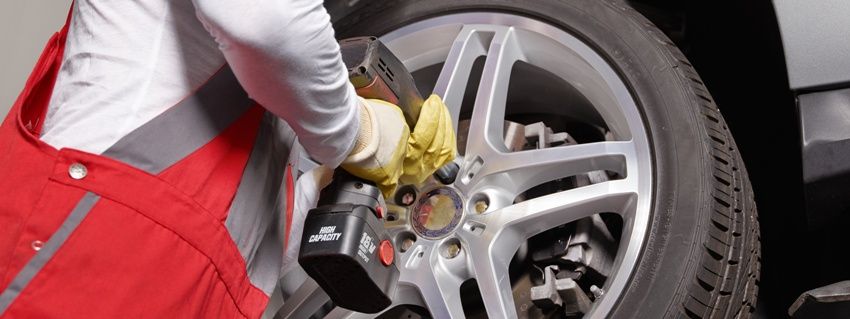
After that, it is necessary to pull out the hook with one sharp movement, while the tourniquet will remain in the tire. Repair can be considered completed after cutting off excess pieces of lace and pumping the wheel to the required pressure.
It is worth noting that when using high-quality sets, this repair is considered to be complete and the puncture will be securely closed until the end of the wheel's service life. The only thing that may be required is balancing.
However, if the damage to the wheel is serious, then you will have to take care of buying a new tire. Recall that it is forbidden to repair cuts on the wheel, such a wheel is no longer allowed for operation even as a spare. Therefore, it is better to choose a cheaper tire than to pay for the repair of a cut, especially since today you can choose a new wheel even through your phone or from your home computer by visiting a specialized website.